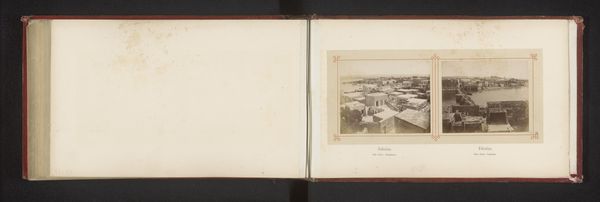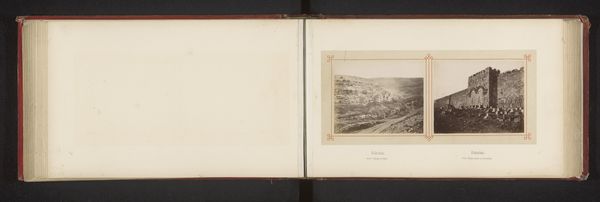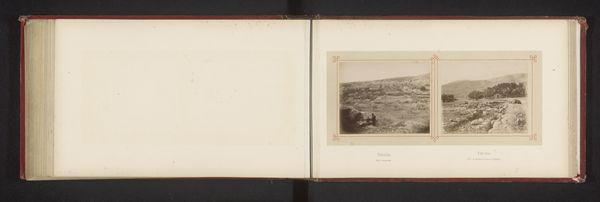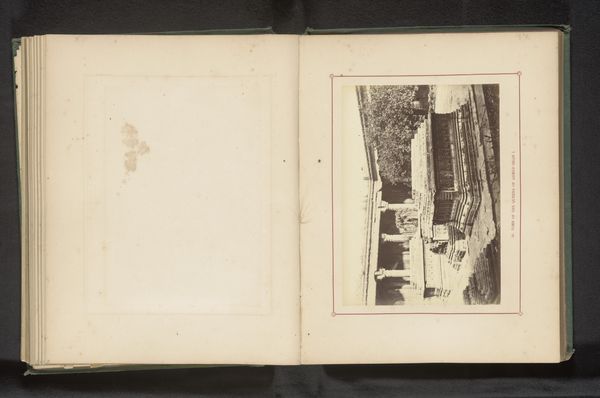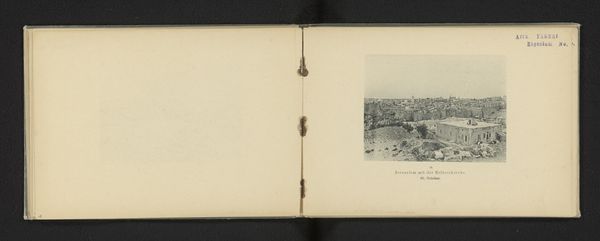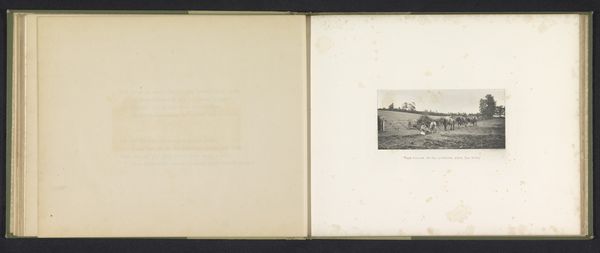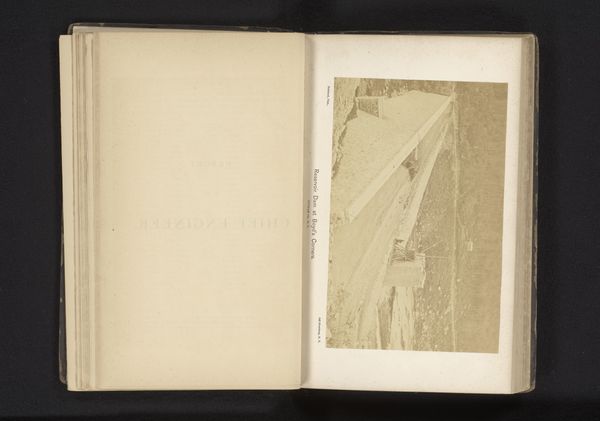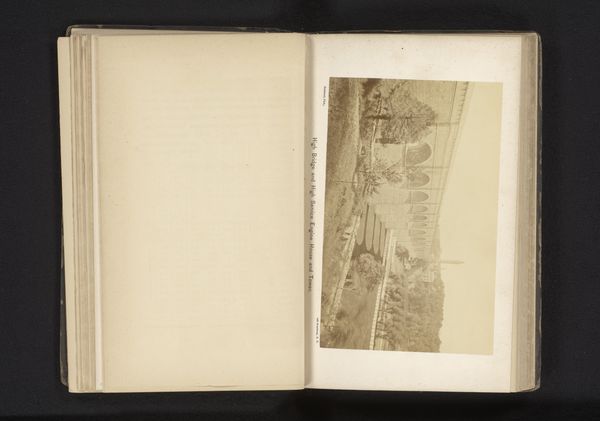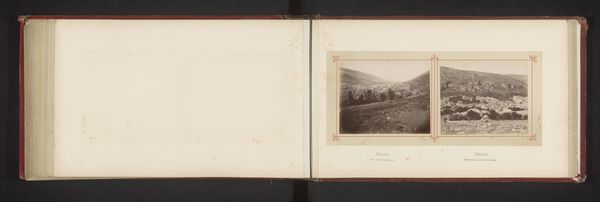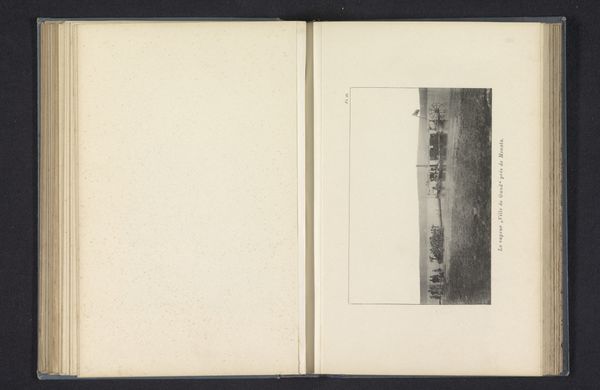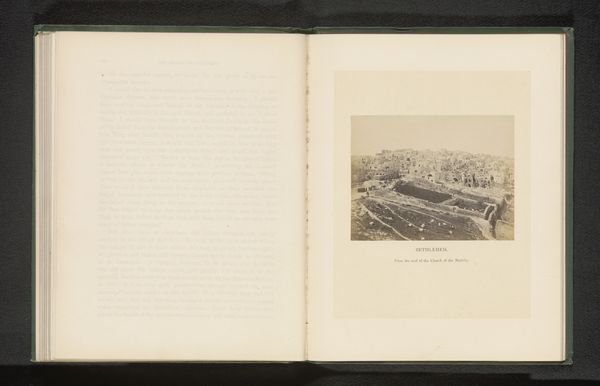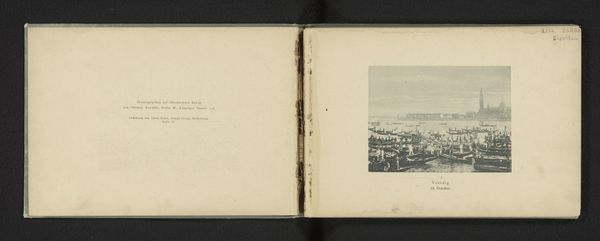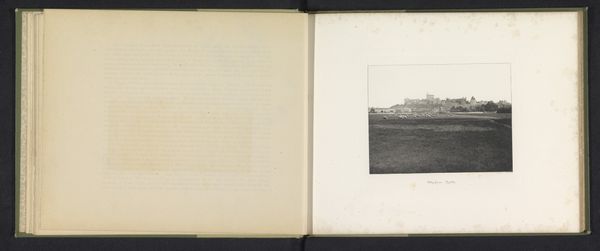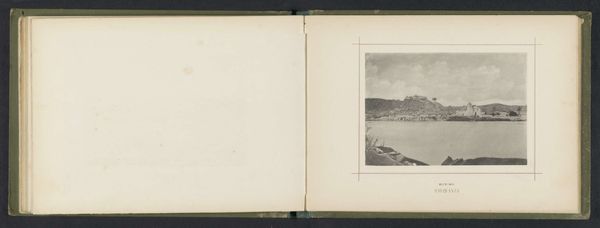
photography, albumen-print
#
landscape
#
photography
#
orientalism
#
cityscape
#
albumen-print
Dimensions: height 77 mm, width 97 mm
Copyright: Rijks Museum: Open Domain
Curator: We’re looking at a landscape photograph, an albumen print by Féliz Bonfils, entitled "Gezicht op een onbekende stad, mogelijk Kaïpha," or "View of an unknown city, possibly Haifa." It dates from before 1878. Editor: The tones are fascinating—that aged sepia is incredibly tactile. You can almost feel the grit of the place in your fingers. And how intriguing, these two photographs framed inside the leaves of an album. Curator: Bonfils was part of a wave of photographers drawn to the Middle East in the 19th century. Photography was changing ideas on the East. His images were circulated widely in Europe and shaped perceptions of the region, feeding an appetite for Orientalist views. Editor: And he made these views quite skillfully, of course. What I find interesting about this image is its double form and its relationship to its bound volume—that’s the means of dissemination. A photographic collection, the modern flipbook. But that sepia... the labor-intensive process of albumen printing. What was he, materially, wanting to convey to the European public? Curator: Indeed, these photographs highlight the city and landscapes, they also contributed to political and cultural dialogues, presenting views through a Western lens, really impacting foreign policy decisions and colonial narratives. Editor: Yes, but those processes weren't neutral, the materiality wasn’t neutral. Bonfils literally laid a chemical substrate to bring that “foreign policy decision” into material being. The darkroom, the lab, his labor– these elements made their mark, right? Curator: Absolutely. These images weren't objective documents; they were constructed views packaged for a specific audience at a precise political time. Editor: Exactly. It’s worth dwelling on how those intentions play out in this print, in the choice of materials. What meanings can the “art for art's sake” in this instance have created for the consumer? The history and chemical processes combine. Curator: Well, thinking about this image now has changed how I’ll see our future displays and shows of it, understanding better what photography at this time can communicate. Editor: I am glad, reflecting on production, materials, and Bonfils’ context has opened new viewpoints for us.
Comments
No comments
Be the first to comment and join the conversation on the ultimate creative platform.
